A Field Performance Evaluation Scheme for Microwave-Absorbing Material Coatings
Abstract
:1. Introduction
2. Preliminaries
2.1. Performance Representation of Microwave Absorbing Materials
2.2. Field Analysis of H-plane Sectoral Horn Antenna
3. Experimental Scheme
4. Results and Discussion
5. Conclusions
Acknowledgments
Author Contributions
Conflicts of Interest
References
- Petrov, V.; Gagulin, V. Microwave absorbing materials. Inorg. Mater. 2001, 2, 93–98. [Google Scholar] [CrossRef]
- Wang, C.; Han, X.; Xu, P.; Zhang, X.; Du, Y.; Hu, S.; Wang, J.; Wang, X. The electromagnetic property of chemically reduced graphene oxide and its application as microwave absorbing material. Appl. Phys. Lett. 2011, 7, 072906. [Google Scholar] [CrossRef]
- Kats, M.A.; Sharma, D.; Lin, J.; Genevet, P.; Blanchard, R.; Yang, Z.; Qazilbash, M.M.; Basov, D.; Ramanathan, S.; Capasso, F. Ultra-thin perfect absorber employing a tunable phase change material. Appl. Phys. Lett. 2012, 22, 221101. [Google Scholar] [CrossRef]
- Kong, L.; Li, Z.; Liu, L.; Huang, R.; Abshinova, M.; Yang, Z.; Tang, C.; Tan, P.; Deng, C.; Matitsine, S. Recent progress in some composite materials and structures for specific electromagnetic applications. Int. Mater. Rev. 2013, 4, 203–259. [Google Scholar] [CrossRef]
- Padhy, S.; Sanyal, S.; Meena, R.; Chatterjee, R.; Bose, A. Characterization and performance evaluation of radar absorbing materials. J. Electromagnet. Wave 2013, 2, 191–204. [Google Scholar] [CrossRef]
- Knott, E.F.; Shaeffer, J.F.; Tuley, M.T. Radar Cross Sections, 2nd ed.; SciTech Publishing: Greensboro, NC, USA, 2004; pp. 361–406. [Google Scholar]
- Zoughi, R. Microwave Non-Destructive Testing and Evaluation; Springer: Berlin/Heidelberg, Germany, 2000; pp. 209–245. [Google Scholar]
- Addamo, G.; Virone, G.; Vaccaneo, D.; Tascone, R.; Peverini, O.A.; Orta, R. An adaptive cavity setup for accurate measurements of complex dielectric permittivity. Prog. Electromagn. Res. 2010, 105, 141–155. [Google Scholar] [CrossRef]
- Hasar, U.C. Unique permittivity determination of low-loss dielectric materials from transmission measurements at microwave frequencies. Prog. Electromagn. Res. 2010, 107, 31–46. [Google Scholar] [CrossRef]
- Zhou, Y.; Li, E.; Guo, G.; Gao, Y.; Yang, T. Broadband complex permittivity measurement of low loss materials over large temperature ranges by stripline resonator cavity using segmentation calculation method. Prog. Electromagn. Res. 2011, 113, 143–160. [Google Scholar] [CrossRef]
- Faria, J.B. Electromagnetic Foundations of Electrical Engineering; John Wiley & Sons: Hoboken, NJ, USA, 2008; pp. 243–273. [Google Scholar]
- Pozar, D.M. Microwave Engineering, 4th ed.; John Wiley & Sons: Hoboken, NJ, USA, 2009; pp. 28–39. [Google Scholar]
- Collin, R.E. Foundations for Microwave Engineering; Wiley & Sons: Hoboken, NJ, USA, 2007; pp. 17–70. [Google Scholar]
- Balanis, C.A. Antenna Theory: Analysis and Design; John Wiley & Sons: Hoboken, NJ, USA, 2012; pp. 739–810. [Google Scholar]
- Silver, S. Microwave Antenna Theory and Design; McGraw-Hill Book Company, Inc.: New York, NY, USA, 1949; pp. 334–387. [Google Scholar]
- Sauleau, R.; Coquet, P.; Thouroude, D.; Daniel, J.-P.; Matsui, T. Radiation characteristics and performance of millimeter-wave horn-fed Gaussian beam antennas. IEEE Trans. Antenna Propag. 2003, 3, 378–387. [Google Scholar] [CrossRef]
- Chung, B.K. Dielectric constant measurement for thin material at microwave frequencies. Prog. Electromagn. Res. 2007, 75, 239–252. [Google Scholar] [CrossRef]
- Micheli, D.; Apollo, C.; Pastore, R.; Marchetti, M. X-band microwave characterization of carbon-based nanocomposite material, absorption capability comparison and RAS design simulation. Compos. Sci. Technol. 2010, 70, 400–409. [Google Scholar] [CrossRef]
- Micheli, D.; Apollo, C.; Pastore, R.; Morles, R.B.; Coluzzi, P.; Marchetti, M. Temperature, atomic oxygen and outgassing effects on dielectric parameters and electrical properties of nanostructured composite carbon-based materials. Acta Astronaut. 2012, 76, 127–135. [Google Scholar] [CrossRef]
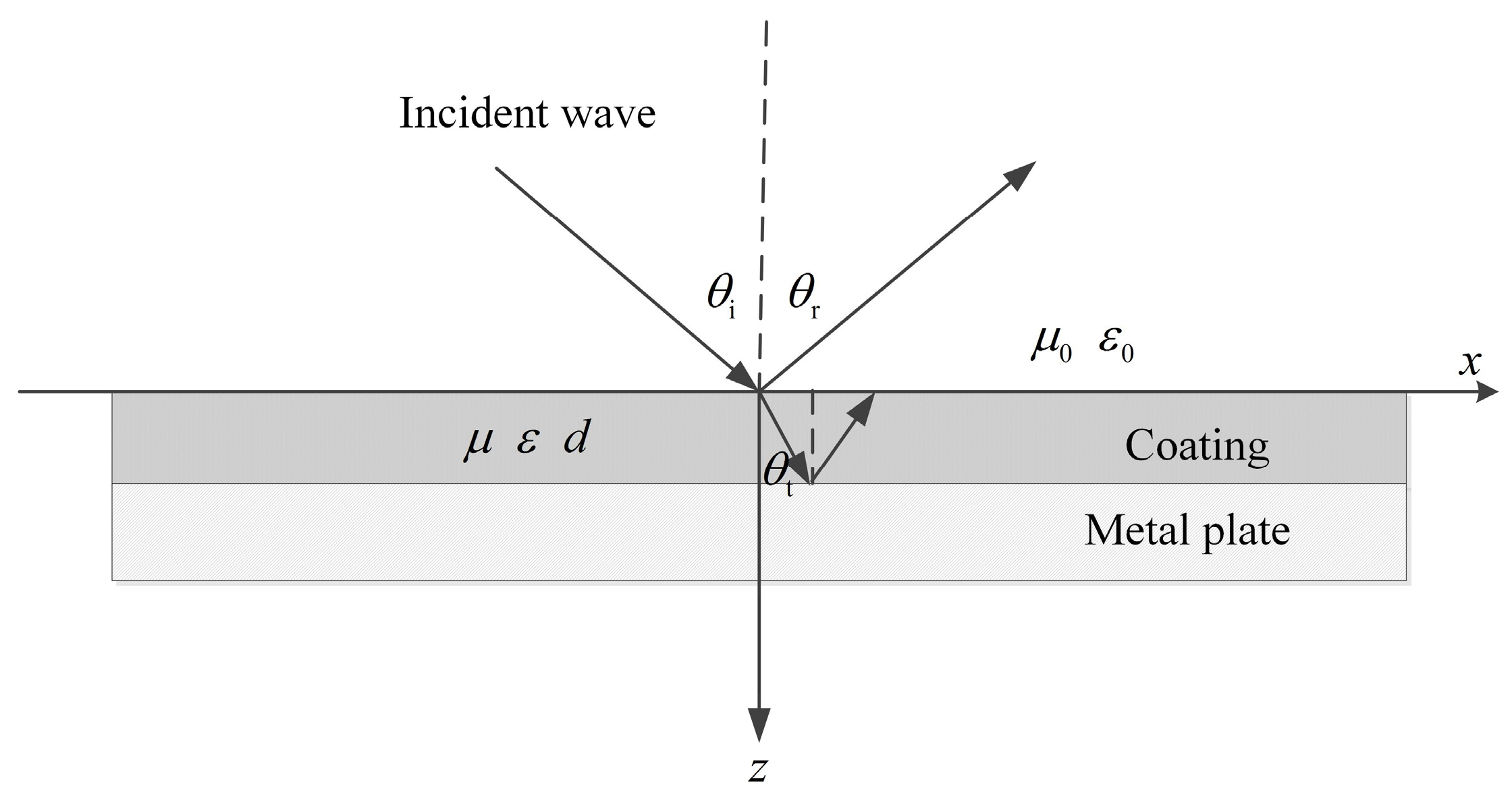
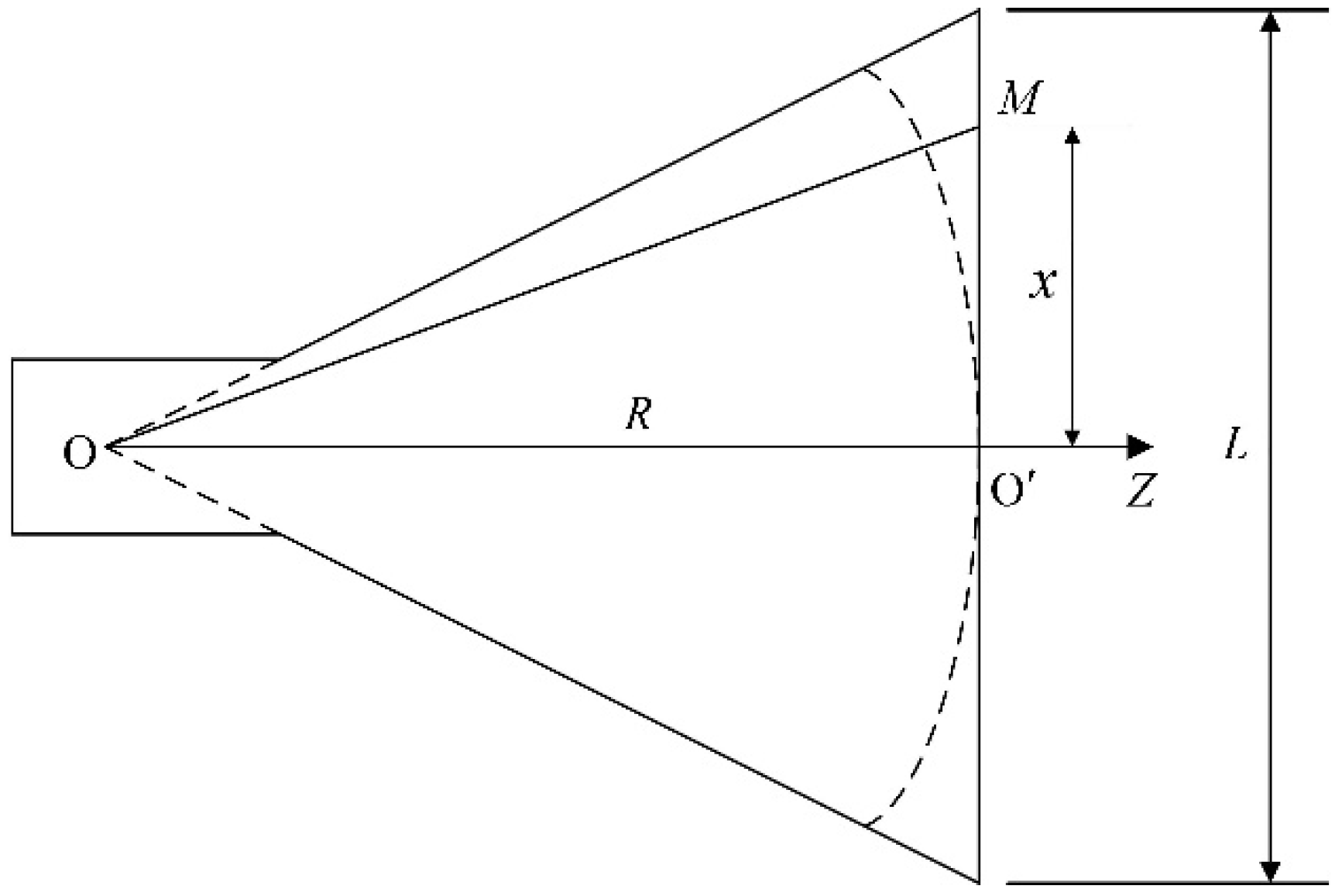
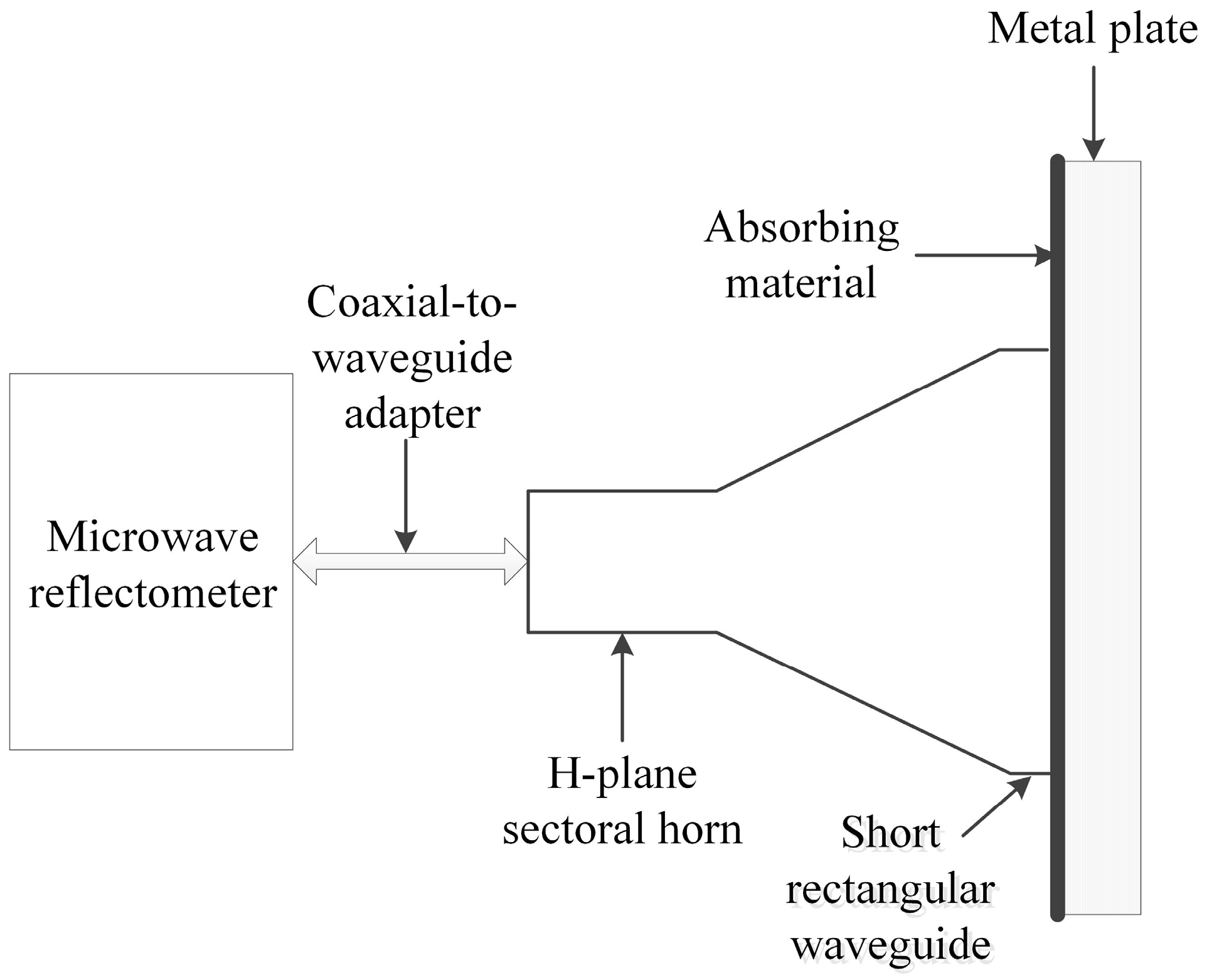
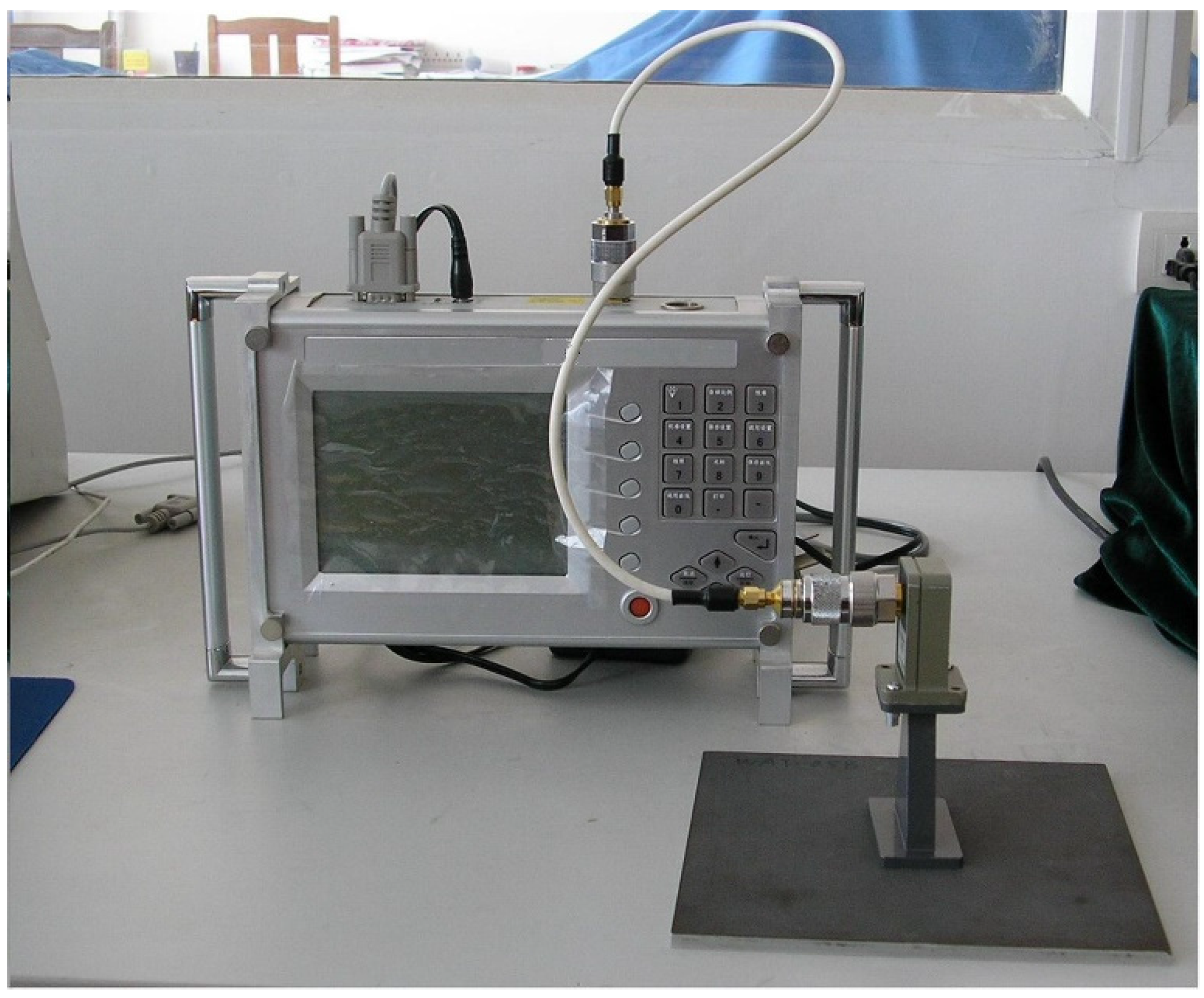
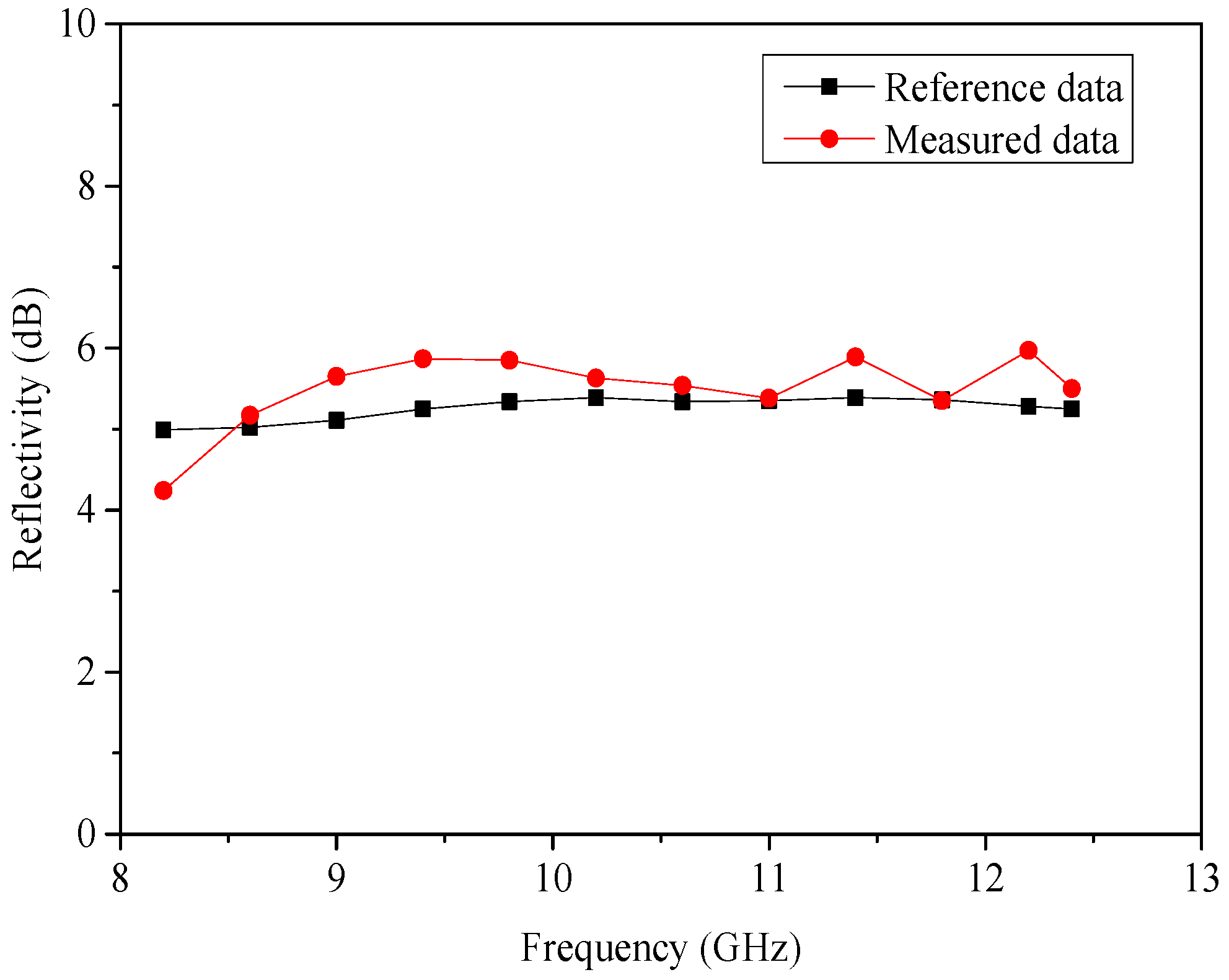
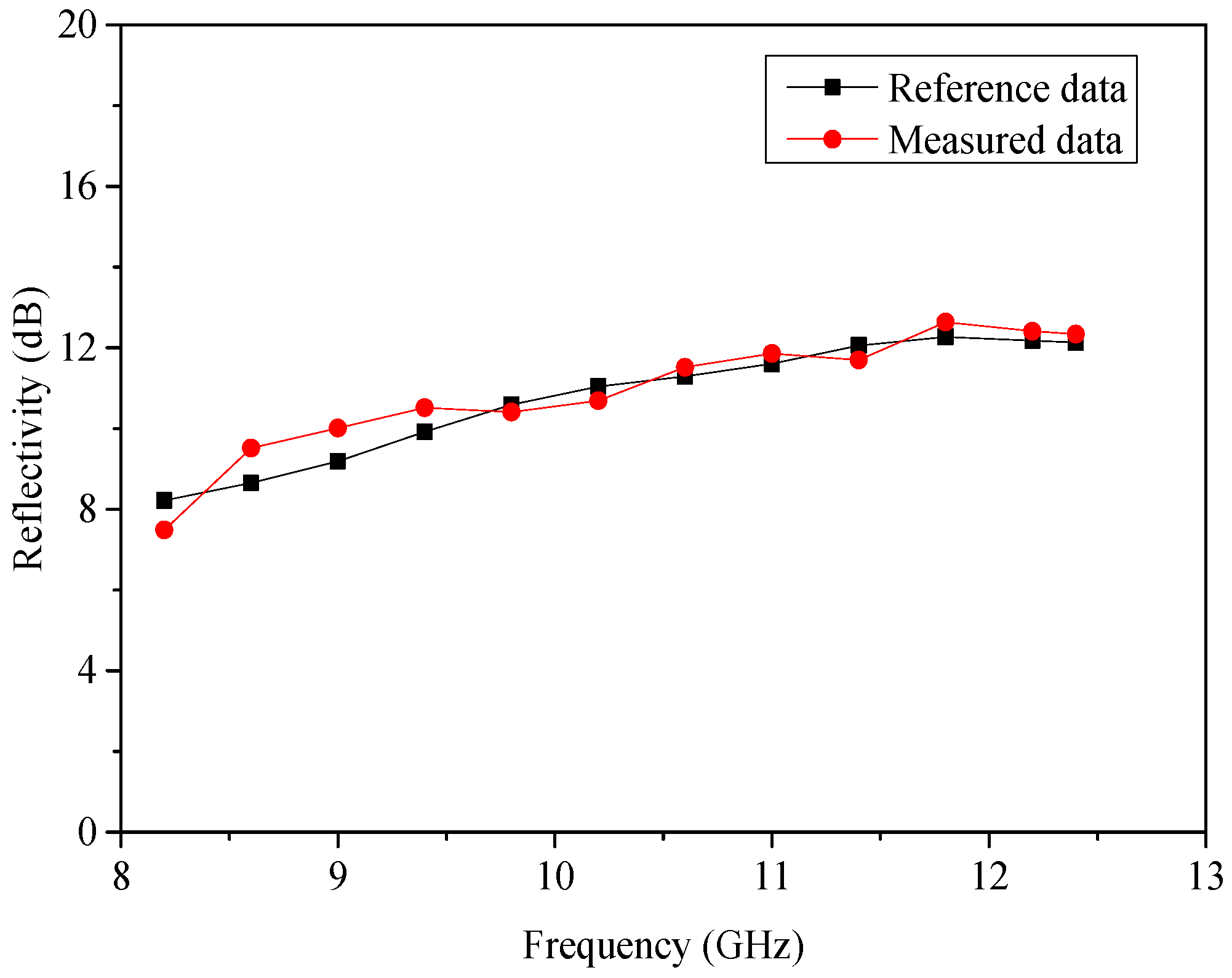
© 2017 by the authors. Licensee MDPI, Basel, Switzerland. This article is an open access article distributed under the terms and conditions of the Creative Commons Attribution (CC BY) license ( http://creativecommons.org/licenses/by/4.0/).
Share and Cite
Guan, S.; Wang, Y.; Jia, D. A Field Performance Evaluation Scheme for Microwave-Absorbing Material Coatings. Coatings 2017, 7, 38. https://doi.org/10.3390/coatings7030038
Guan S, Wang Y, Jia D. A Field Performance Evaluation Scheme for Microwave-Absorbing Material Coatings. Coatings. 2017; 7(3):38. https://doi.org/10.3390/coatings7030038
Chicago/Turabian StyleGuan, Shaopeng, Yongyu Wang, and Daiping Jia. 2017. "A Field Performance Evaluation Scheme for Microwave-Absorbing Material Coatings" Coatings 7, no. 3: 38. https://doi.org/10.3390/coatings7030038




